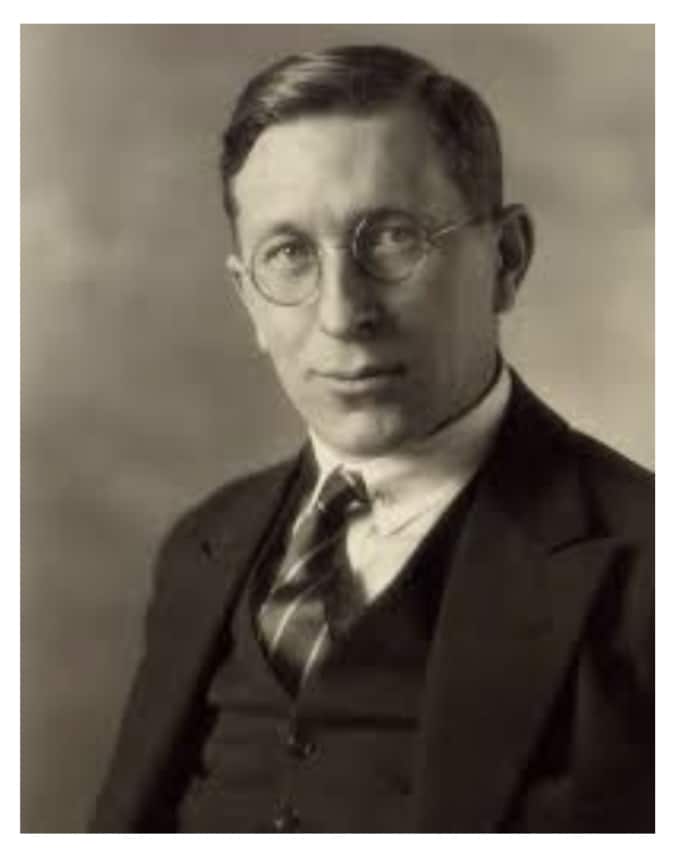In 1922, a group of scientists went to the Toronto General Hospital, where diabetic children were kept in wards, often 50 or more at a time. Most of them were comatose and dying from diabetic ketoacidosis. Others were being treated by being placed on an extremely strict diet, which inevitably led to starvation.
These children were essentially on their death beds, awaiting what was, at that time, a certain death. The scientists moved swiftly and proceeded to inject the children with a new purified extract of insulin. As they began to inject the last comatose child, the first one to be injected began to wake up. Then, one by one, all the children awoke from their diabetic comas. A room that was full of death and gloom suddenly became a place of joy and hope.

In the early 1920s, Frederick Banting and Charles Best discovered insulin under John Macleod at the University of Toronto. With the help of James Collip, insulin was purified, making it available to successfully treat diabetes. Both Banting and Macleod earned Nobel Prizes for their work in 1923.
In the same year, Banting, Collip, and Best decided to sell the insulin patent to the University of Toronto for $1. Banting famously went on to say, “Insulin does not belong to me; it belongs to the world.”
The discovery of insulin stands as a landmark achievement in the history of medicine, transforming the prognosis of diabetes from a fatal diagnosis to a manageable condition. This breakthrough was made possible by the collaborative efforts of Frederick Banting, Charles Best, and James Collip. Their groundbreaking work in the early 1920s not only saved countless lives but also paved the way for further advancements in the field of endocrinology.
- Frederick Banting: The Visionary Surgeon Frederick Banting, a Canadian surgeon, played a pivotal role in the discovery of insulin. Motivated by a deep sense of empathy for diabetic patients, he embarked on a mission to find a solution for their life-threatening condition. In 1921, Banting, with the help of his assistant Charles Best, conducted a series of experiments at the University of Toronto that eventually led to the isolation of insulin.Banting’s revolutionary idea involved ligating the pancreatic ducts of dogs to induce atrophy in the pancreatic acinar cells while leaving the islets of Langerhans untouched. This approach, known as the Banting and Best method, successfully produced an extract that proved to have life-saving properties for individuals suffering from diabetes.
- Charles Best: The Dedicated Collaborator Charles Best, a physiology student at the University of Toronto, became an indispensable partner in Banting’s research. Working closely with Banting, Best played a crucial role in refining the extraction process and conducting experiments that ultimately led to the successful isolation of insulin. His dedication and scientific acumen were essential in translating Banting’s visionary ideas into tangible results.The collaboration between Banting and Best exemplifies the power of interdisciplinary teamwork in scientific breakthroughs. Their work laid the foundation for the development of insulin as a therapeutic agent for diabetes.
- James Collip: The Biochemist and Refinement Expert James Collip, a biochemist, joined the insulin research team to refine and purify the insulin extract. His expertise in purification techniques was instrumental in producing a more potent and consistent form of insulin. Collip’s contributions significantly improved the efficacy and safety of the insulin preparations, ensuring its viability for clinical use.Collip’s role in the insulin discovery process highlights the importance of combining medical and biochemical expertise. His efforts were instrumental in overcoming initial challenges related to the variability and impurity of early insulin preparations.
The collaborative efforts of Banting, Best, and Collip in the discovery and development of insulin represent a triumph of scientific ingenuity and compassion. Their work revolutionised the treatment of diabetes, saving countless lives and improving the quality of life for millions worldwide. The story of insulin’s discovery serves as an enduring testament to the impact that dedicated individuals can have on advancing medical science and underscores the importance of collaboration across disciplines in the pursuit of groundbreaking solutions to complex medical challenges.
@historycoolkids
If you like our content, join us in helping to bring reality and decency back by SUBSCRIBING to our Youtube channel: https://www.youtube.com/channel/UCQ1Ll1ylCg8U19AhNl-NoTg AND SUPPORTING US where you can: Award Winning Independent Citizen Media Needs Your Help. PLEASE SUPPORT US FOR JUST £2 A MONTH https://dorseteye.com/donate/







